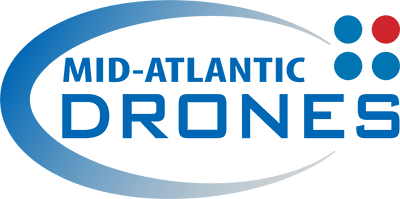Let’s face it, flying drones is fun. But, if you actually want to make a living at it, you’ve got to find an area that can not only benefit from drones, but that you can also convince to adopt the technology. With more than 200% growth in use year-over-year since 2017, construction has embraced drones like no other industry, which makes it perfect to focus your efforts on. In addition, the contracts are usually long and steady, allowing you a dependable and predictable revenue stream. But, before you simply dive right in, here’s a few things you’ll need to ponder in order to get your journey off to a successful start.
Aircraft

You’ll need two: your primary and the back-up. Get a drone with geo-tagging capabilities, mechanical shutter, 4K video and 20 mp still photo specs with the largest sensor possible (look for 1”). I’m invested in the Phantom 4 Pro pretty heavily, so I go with that. If I were starting today, I’d seriously consider the Mavic 2 Pro. The Skydio II has just been released and is coming on strong. If it’s everything it’s promised to be, it may be the one to watch-and buy. In any case, look with an eye to the future. Whatever drone you acquire, it should be future-proof for 2-3 years, since you’ll be investing in all the ancillary gear to keep you in the air.
Expect to pay $1500-$1800 for a starter package with drone, controller, one battery and charger.

Support Gear
You thought you were getting into this cheap? Not a chance. Keeping it in the air means power-as in extra batteries. I recommend a minimum of nine, which allows you to fly all day if necessary by continuously charging. Extra chargers? You bet. Multi-chargers should be parallel, not consecutive. This means multiple batteries charge at the same time as opposed to one after another. You’ll also want a good set of filters-at least ND4 and ND8 with polarized glass and without. And don’t forget the SD cards: six at the least.
All this will set you back between $1500 and $2000.

Monitor
Let’s face it, flying with your phone is not only difficult due to screen size, but it looks very unprofessional. If you’re in this for the long run, you’ll want to invest in a dedicated monitor such as the DJI Crystal Sky or an iPad Mini or Regular. The larger screen size means you’ll see things you might not see with your phone. And the high-bright screen of the Crystal Sky comes in real handy when flying missions in the bright summer sun.
These options will run between $300 and $900 depending on size and brightness.

Personal Protective Equipment, or “PPE”.
All sites require specific clothing to keep you safe when on the job. This is known as “PPE”. Minimum PPE includes a high-visibility vest, shirt or jacket, Steel or composite-toe boots and an ANSI-rated hard-hat. Many also require eye and ear protection as well. PPE is relatively inexpensive, but expect to spend a couple hundred dollars.
Insurance
One of the most costly regular expenses on any drone job is the liability insurance. Your company minimum should be $1 million, but for construction, you may be required to carry $5 million or $10 million. Unfortunately, most won’t accept the “per flight” insurance that’s increasingly popular these days. You’ve got to show ongoing coverage that’s in place before you fly the job and continues throughout the life of the contract. Liability only will set you back between $900-1600 per year depending on your experience, your use, and any other pilot ratings you hold.
Software
The other big regular expense is your software. Sure, you can find free stuff to fly the drone, but to process your images into Orthomosaics & 3D Models, and to measure, overlay and provide volumes, you’ll need to pay for a software subscription to do it. Some of the offerings include Drone Deploy, Pix4D, Precision Hawk, Agisoft and others. Your final choice will depend on what you need to deliver and how you need to deliver it—All beyond the scope of this article. Needless to say, it’s expensive. Be prepared to pay anywhere from $2,400.00-$9,000.00 per year
Now that you have the gear, you need some clients to pay for it. In our next article, we’ll cover how to find the business, what to charge and what specific services you should offer.



